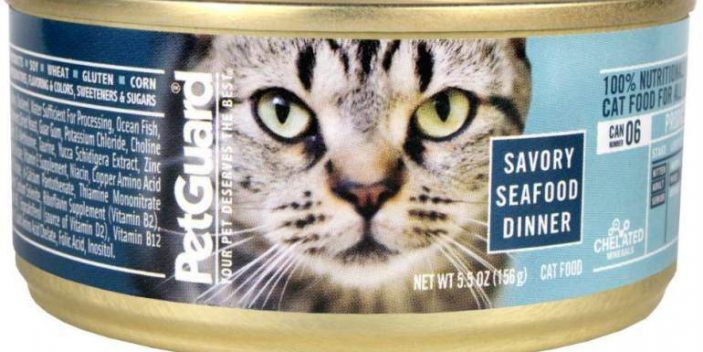Copper (Cu) is a trace element essential for cats which occurs mainly as cuprous and cupric salts whose oxidative states are Cu1+ and Cu2+ respectively. However, this element can occur in a free state in very small amounts.
In cats, Cu absorption occurs in the ileum and once it is in the liver, it binds with ceruloplasmin before it is transported throughout the body in blood plasma for use or storage especially in the brain, liver, kidney, etc.
How much the body absorbs depends on the dietary amount available. However, high levels of vitamin C, calcium, zinc, sulfur, iron and toxic metals (silver, lead, cadmium, etc.) decrease its bioavailability.
For instance, zinc inhibits its absorption since it stimulates a protein known as metallothionein that binds with copper since it has a higher affinity for this mineral. This inhibitory role makes zinc to be used in dogs that have copper storage hepatopathy.

Finally, its regulation is through biliary excretion.
Functions in cats
- It is a component of several enzymes involved in catalysis oxidation reactions. For instance, it is a component of ferroxidase enzyme (involved in red blood cells creation and maturation), lysyl oxidase (participates in connective tissues creation) and superoxide dismutase (fights against oxidative damage).
- Being one of the tyrosinase components, it is necessary for melanin pigment formation and consequently ensures normal fur color.
- Also, it is necessary for collagen formation and nervous function
- It plays a vital role in ” normal absorption and transport of iron” notes Vet Knowhow.
How much copper is needed?
According to AAFCO 2014, the minimum copper requirement on dry matter basis in extruded (dry) cat food is 15mg/kg for growth and reproduction and 5mg/kg for adult maintenance. For canned (wet) food, the minimum required amounts are 8.4mg/kg and 5mg/kg for growth or reproduction and adult maintenance respectively.
Basing on metabolizable energy (ME) the least amount required per 1000 kcal ME for extruded feline food is 3.75mg and 1.25mg for reproduction or growth and adult maintenance respectively. For canned food, these values are supposed to be 2.0mg and 1.25mg respectively.
However, ensure “add 10 IU Vitamin E above the minimum concentration for each gram of fish oil per kilogram of diet,” advises AAFCO.
Sources
Some of the copper-rich foods comprise of oysters, liver and other organ meats, spirulina, shiitake mushrooms, sweet potatoes, nuts and seeds (such as sesame seeds, cashews, and chickpeas), salmon, lobsters, avocados, and leafy greens.
In commercial cat foods, copper supplemented using various of its salts including cupric sulfate, chloride, and carbonate. However, copper oxide is not a readily bioavailable source and can lead to deficiency.
Usually, the use of copper sulfate in cat food is the most effective and most commonly used way to ensure there is enough of this mineral in commercial feline foods.
A few concerns have been raised because copper sulfate is used as pesticide, germicide, the electrolyte in batteries, fungicide, and bactericide. However, it is safe when given at the recommended amounts.
Finally, according to WikiVet, the “chelates of amino acids such as lysine are also good sources of bioavailable” Cu.
Deficiency
Copper deficiency in cats has been associated with its low concentration in liver and reduced weight gain (growth rate) in kittens.
Queens fed with low copper diet were less efficient in reproducing with an increased duration between successive conception. [1]
Also, anemia, poorly formed bones and fetal deformities may be noted.
Finally, since it is required in melanin formation from tyrosine, a deficiency may result in depigmentation in black cats whose color may turn reddish brownish in color.
Copper toxicity in cats and symptoms
Whereas it has many benefits, excessive amounts may be toxic to this pet. For instance, Petfood Industry reports that “the maximum tolerable level is 250 mg/kg”, for dogs. However, there is no upper limit for cats.
However, like other heavy metals, poisoning is possible. Some signs of poisoning include lethargy, jaundice, and vomiting states Pets on Mom.me
What most sources consider as toxicity is more of the hereditary copper storage problem that is noted in dog breeds such as West Highland White Terriers and Bedlington Terriers.
Its accumulation will result in liver hepatitis or inflammation and it can affect the Doberman Pinschers.
Hepatic copper Accumulation
This refers to a Cu storage hepatopathy where this mineral accumulates in the liver causing liver cirrhosis and hepatitis.
It is considered a secondary condition caused by an underlying primary condition, especially if there is an abnormal metabolism or inability to excrete this mineral.
Most of the symptoms that will result will be consistent with those resulting from some liver problems in cats or liver hepatopathy in cats.
